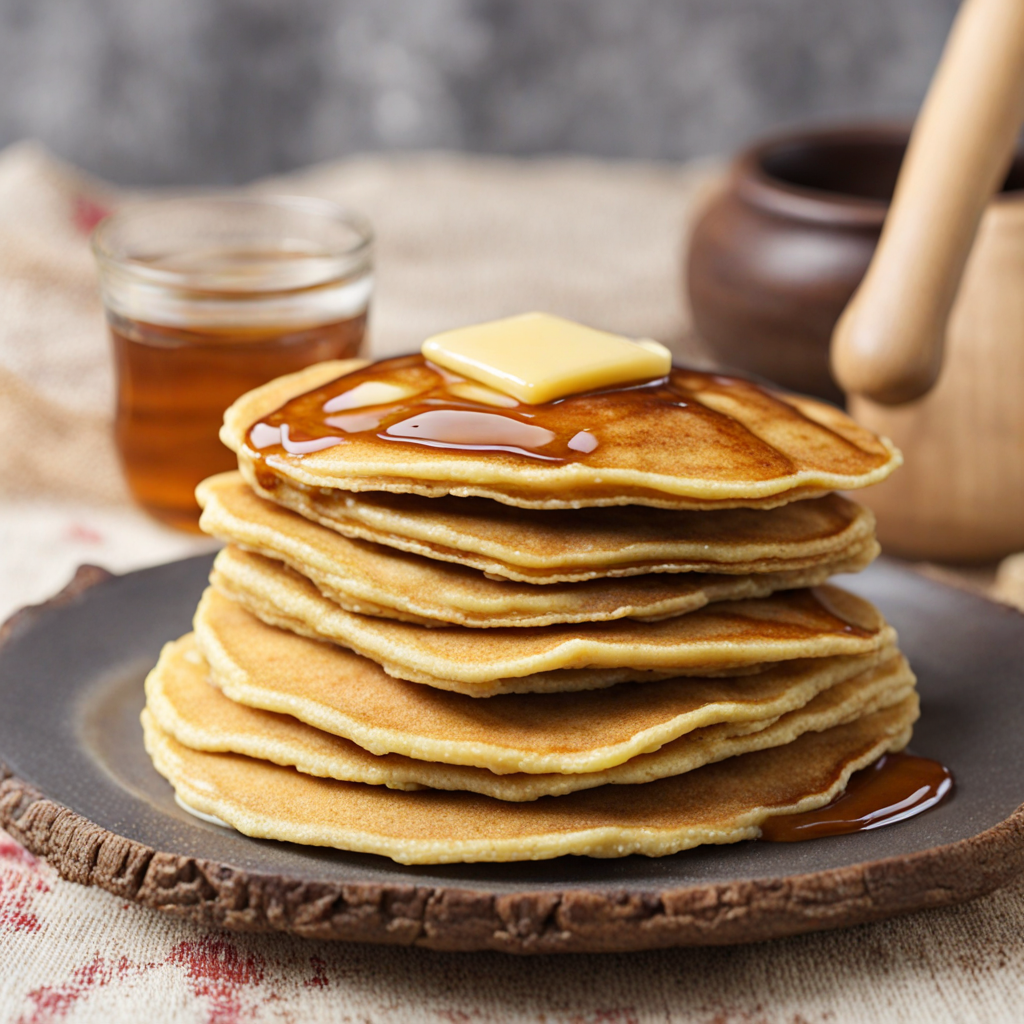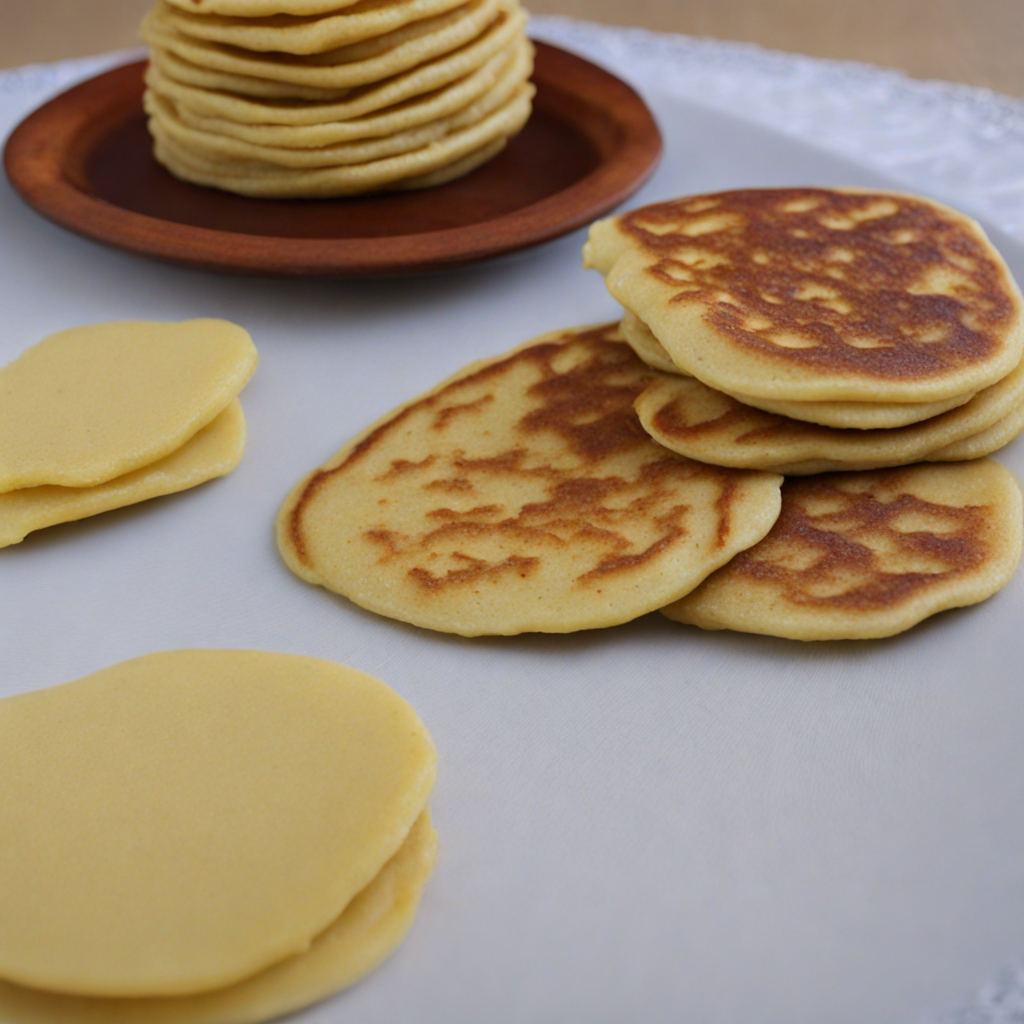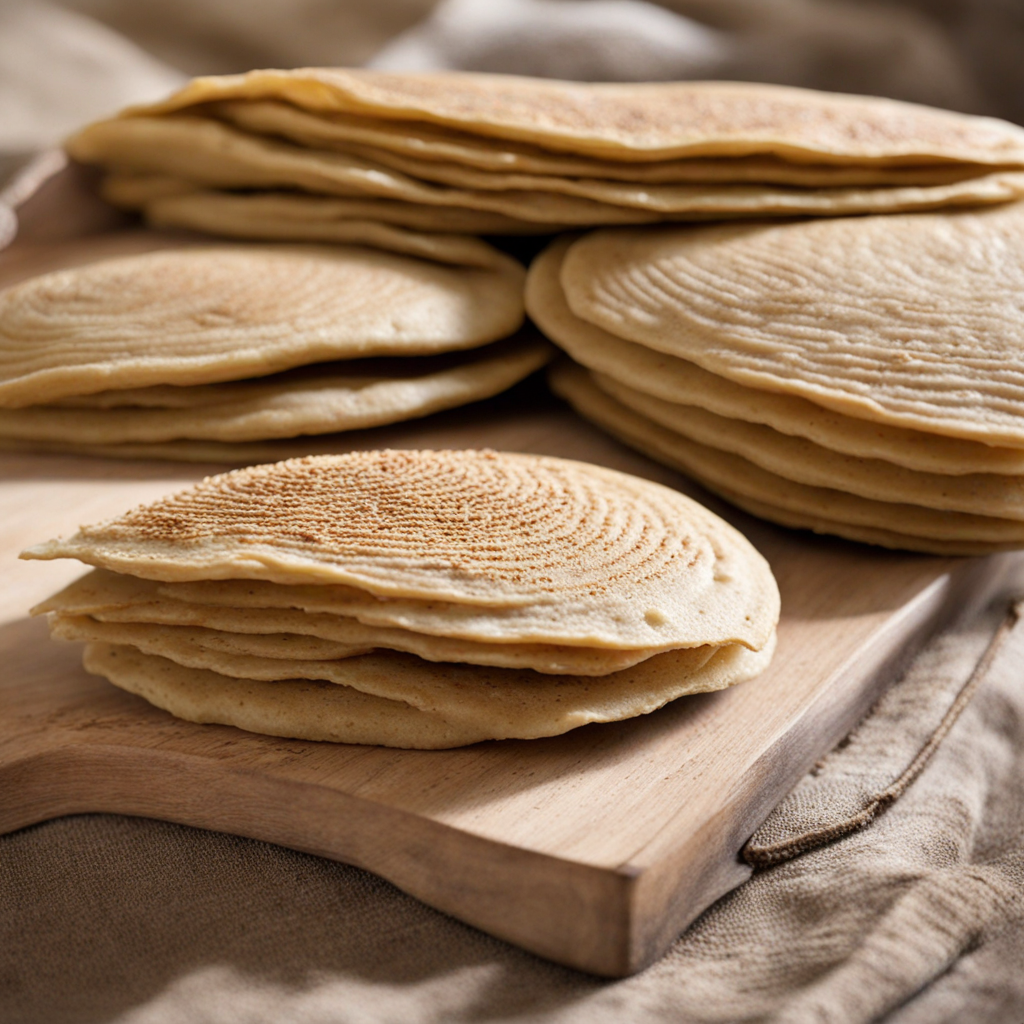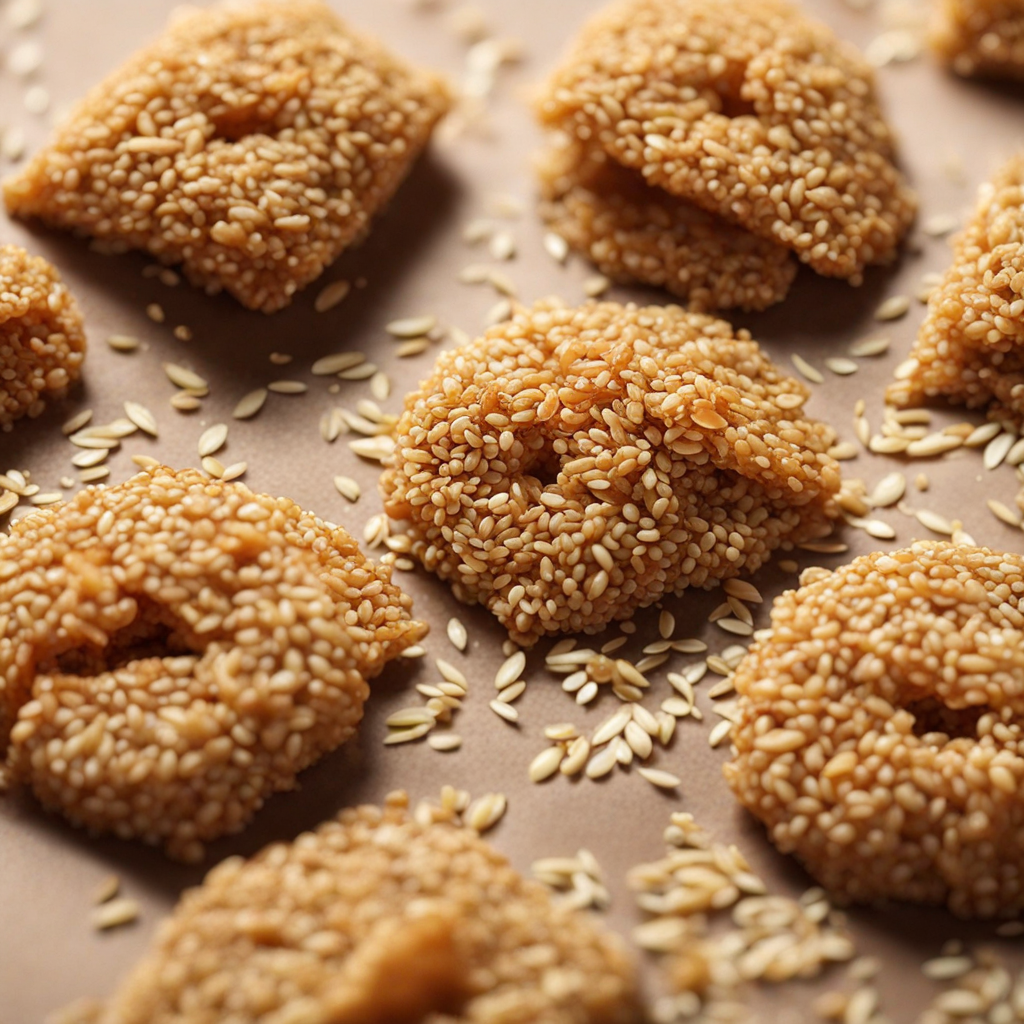Millet Pancakes
Millet pancakes, a delightful staple from Chad, are made primarily from finely ground millet flour, which is a nutritious and gluten-free grain. This ancient grain provides a subtle, nutty flavor that elevates the pancakes beyond their simple appearance. The batter is often enriched with water or milk, and sometimes includes a pinch of salt or sugar to enhance the taste. The pancakes are typically cooked on a hot griddle until golden brown, creating a slightly crispy exterior while maintaining a soft, fluffy interior. Each bite offers a unique texture that is both satisfying and hearty, making them a perfect accompaniment to various dishes. Traditionally, millet pancakes are served with a variety of sides, allowing for a mix of flavors and textures. They are commonly paired with stews or sauces, such as a rich tomato-based sauce or a spicy vegetable medley, which soak into the pancakes and enhance their flavor profile. Additionally, they can be enjoyed with honey, fresh fruits, or yogurt, making them versatile for both savory and sweet palettes. This adaptability makes millet pancakes an excellent choice for breakfast, lunch, or dinner, as they can easily complement any meal. In Chad, millet pancakes are not just a food item; they embody the culture and communal spirit of the people. They are often prepared during family gatherings or celebrations, where sharing and enjoying food together is a cherished tradition. The process of making these pancakes can become a communal activity, bringing families and friends together in the kitchen. For those venturing into the world of millet pancakes, each bite is not only a taste of the grain but also a connection to the rich heritage and culinary practices of Chad.
How It Became This Dish
The History of فطائر الدخن (Fatair al-Dukhun) from Chad Introduction to فطائر الدخن فطائر الدخن, or millet pastries, are a cherished culinary tradition in Chad, a country located in Central Africa known for its rich cultural tapestry and diverse ethnic groups. These pastries encapsulate the agricultural practices, social customs, and historical narratives of the Chadian people. With roots deeply embedded in the country's agricultural heritage, فطائر الدخن not only serves as a staple food but also as a symbol of identity and community. Origins of فطائر الدخن The history of فطائر الدخن can be traced back to the ancient agricultural practices of the Sahel region, where millet (known as دُخن or dukhun in Arabic) has been cultivated for thousands of years. Millet is one of the oldest domesticated grains, believed to have been first cultivated in Africa around 4000 BCE. Its resilience to drought and ability to thrive in poor soils made it a staple crop for many communities in the Sahel, including those in Chad. In Chad, millet is not just a food source; it is a vital part of the cultural identity and agricultural practices of the people. The various ethnic groups in the country, including the Sara, Arab, and Maba, have all contributed to the development of recipes and methods for preparing millet-based dishes. The evolution of فطائر الدخن reflects the interplay of these diverse cultures over centuries. Cultural Significance of فطائر الدخن Fatair al-Dukhun is more than just a dish; it symbolizes community and tradition. The preparation of these pastries often involves communal practices, where families and neighbors come together to grind millet, knead dough, and fry the pastries. This aspect of communal cooking fosters social bonds and reinforces cultural ties. In many Chadian communities, فطائر الدخن is served during significant occasions, such as weddings, religious festivals, and family gatherings. The act of sharing these pastries embodies hospitality, as offering food is a key element of Chadian culture. The pastries are often accompanied by spicy sauces or stews, enhancing both their flavor and the communal experience of dining. Ingredients and Preparation The basic ingredients for فطائر الدخن include millet flour, water, and a small amount of salt. Depending on the region and personal preferences, additional ingredients such as sugar, spices, or vegetables may be incorporated into the dough. The preparation process begins with the grinding of millet into flour, which is traditionally done using a mortar and pestle or a grinding stone. Once the flour is ready, it is mixed with water and salt to form a soft dough. This dough can be shaped into small patties or filled with various fillings, such as sweetened ground nuts or vegetables, depending on the desired flavor profile. The pastries are then fried until golden brown, creating a crispy exterior that contrasts with the soft interior. The versatility of فطائر الدخن allows for endless variations, tailored to regional tastes and available ingredients. In urban areas, for example, street vendors often sell these pastries, showcasing their adaptability to modern culinary trends. Evolution Through Time As Chad navigated through various historical periods, including colonization, conflict, and globalization, فطائر الدخن has evolved while maintaining its core identity. The introduction of new cooking techniques and ingredients during the colonial era influenced the preparation of millet pastries. For instance, the use of refined oils instead of traditional fats became more common, altering the flavor and texture of the pastries. In contemporary Chad, the influence of globalization has also impacted food practices. Access to new ingredients and cooking methods has led to innovative interpretations of فطائر الدخن. While traditional recipes remain cherished, culinary experimentation has introduced new flavors and styles, attracting younger generations who seek to blend tradition with modernity. The rise of urbanization has also changed the way فطائر الدخن is consumed. In cities, the convenience of street food has made these pastries a popular quick snack. They are often sold alongside other local delicacies, and their popularity continues to grow among both locals and visitors. This evolution signifies the resilience of Chadian culinary traditions, as they adapt to changing lifestyles while retaining their cultural significance. Fatair al-Dukhun in the Global Context In recent years, there has been a growing interest in African cuisine on the global stage, with chefs and food enthusiasts seeking to explore the flavors and ingredients that define various cultures. فطائر الدخن has found its way into international food festivals and culinary events, where chefs highlight its unique flavors and nutritional benefits. This exposure not only promotes Chadian culture but also contributes to the recognition of millet as a superfood, rich in nutrients and gluten-free. Moreover, the global movement towards sustainable and local eating practices has cast a spotlight on traditional grains like millet. As more people seek to incorporate healthier and environmentally friendly food choices into their diets, فطائر الدخن stands out as an excellent option, embodying both nutritional value and cultural heritage. Conclusion The history of فطائر الدخن is a testament to the cultural richness and resilience of the Chadian people. From its ancient agricultural origins to its role in contemporary society, these millet pastries encapsulate the essence of Chadian identity, community, and culinary tradition. As Chad continues to navigate the complexities of modernity, فطائر الدخن remains a beloved dish, bridging the past with the present and inviting future generations to partake in its rich heritage. Through its flavors and significance, فطائر الدخن continues to bring people together, celebrating the vibrant culture of Chad and the enduring legacy of its culinary practices.
You may like
Discover local flavors from Chad







